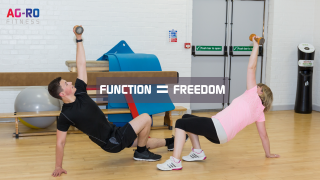So, following on from my last post, here we can learn more about some of the basic types of stretches and what they are for:
STATIC:
Static Stretching is like Ronseal; it does exactly what it says on the tin. You take a muscle to its end range, until you can feel a gentle stretch in the belly of the tissue, and hold it at that point. This is the most commonly performed type, partly being the safest method due to the relatively low levels of tension developed and partly because of the ease involved in learning it. However, note that this type should not form a part of the warmup and mobilisation phases before a workout*.
DYNAMIC:
Dynamic Stretching is sometimes referred to as active Stretching. It is now being seen as a replacement for static Stretching during a warmup as it reproduces the kind of movements performed during most activities. Dynamic stretches involve progressively taking a muscle through its entire range of motion, starting small and gradually increasing both movement range and speed.
In a warmup, we focus on the control of the movements where we can tailor them to the activities we are about to perform in our workout.
BALLISTIC:
Ballistic Stretching is the bouncing type of Stretching, taking the muscle close to its limit and then bouncing to increase the end range. This type is rarely recommended due to the increased risk of injury, and it offers no increased benefits over other types such as PNF and Dynamic. No House of Pain anthems here.
PNF (Proprioceptive Neuromuscular Facilitation):
PNF can take several forms and is a staple treatment used by many physios, PTs, and other sports injury professionals.
PNF can also be used for treatments with aims other than Stretching; for example, strengthening a muscle for rehab purposes. Very few regular movements or activities use only one plane of motion. Thus PNF for rehabilitation incorporates spiral and diagonal movements to help train the body in the way in which it is most often used. It is important to note that PNF stretching should not be attempted without proper instruction or under the supervision of a trained professional.
*Why not?
Your body and brain are incredible and naturally store motor patterns. You don’t have to think about how to breathe, right? No, it just happens when you need it to. The same goes for movement patterns in the body. We’ll use a squat as an example. Once learned, the brain knows how and when to activate all the muscles involved in that movement.
BUT, static Stretching before performing these movements can actually interrupt these stored movement patterns, effectively causing your brain to need to relearn them. Not something you want before training unless you want to increase your injury risk. This is where appropriate dynamic Stretching before exercise is the way to go.
Now, this is just a brief overview of the most common forms of stretching you may come across. If you’d like more info on other types and techniques such as; Passive, Active, Partner, Isolation, and Muscle Energy Techniques (METs). Then, please send me a private message. And. if you learned something, please do show your support for the business with a like and/or a follow



